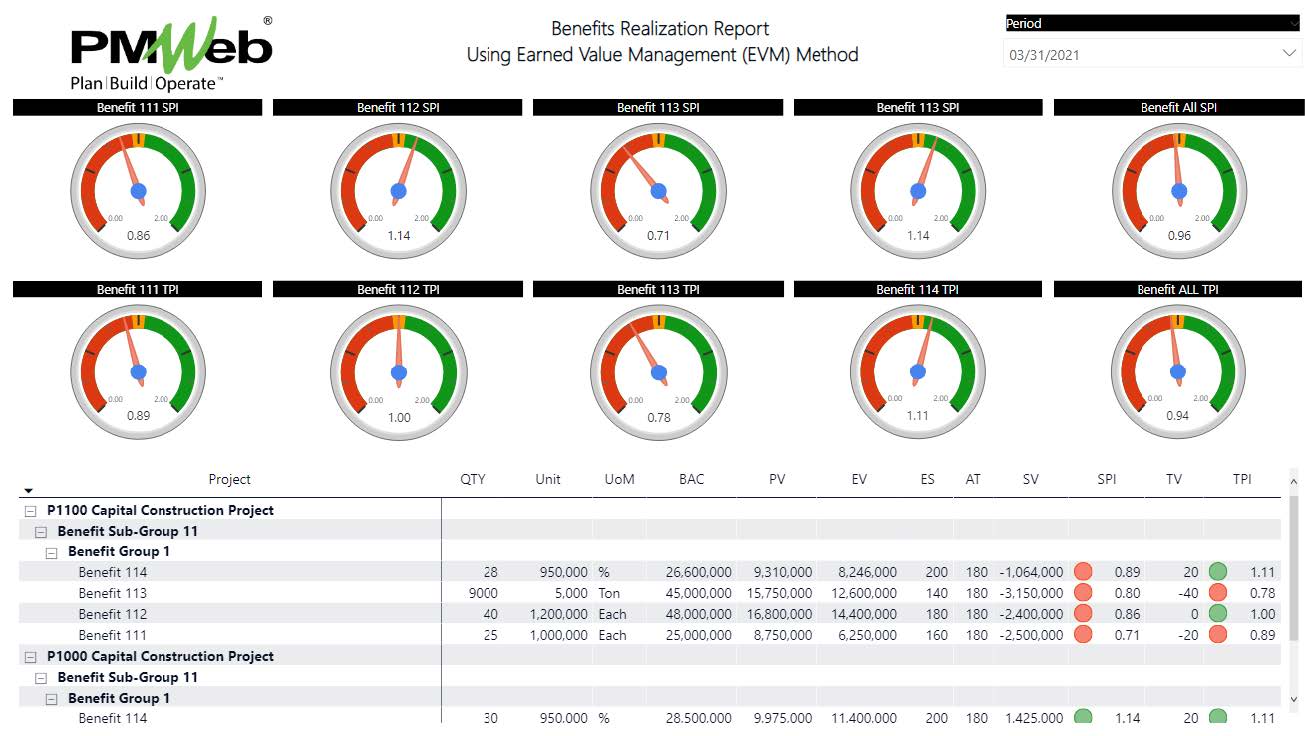Monitoring, evaluating, and reporting the performance of schedule, cost and quality will always be a core requirement when it comes to managing the execution of capital construction projects. Nevertheless, it is also true that project owners, and in particular those of the public sector, each project they undertake will contribute to their entity strategy and in many times even to their country strategy. Usually, the benefits of capital construction projects will be only realized when the project is completed and goes into operation. Organizations are usually interested in monitoring, evaluating, and reporting the benefits realization of those projects over a period of 5 years after going live.
It should also be noted that although benefits do contribute to each project’s Return of Investment (ROI), nevertheless, in many cases, projects with low ROI values could be as important as projects with high ROI. This makes monitoring, evaluating, and reporting the benefit value that each project brings to the organization of the country required to be done across the complete portfolio of projects that an organization has.
Nevertheless, there is always a challenge on how to have a measure that is common to all categories and types of projects’ benefits to provide an integrated value monitoring, evaluating, and reporting. For example, when it comes to building highways, the benefits could be reducing travel time, reducing fatal accidents, reducing CO2 emissions, creating service islands to generate job opportunities among others. Although each one of those benefits could have its own measure, nevertheless, all those measures need to be monetized to standardize their performance reporting at project, program, and projects’ portfolio levels. In other words, there is a need to establish the dollar value of preventing a fatal car accident, reducing travel time by 5 minutes, and other types of benefits.
This enables capital project owners to have a comprehensive value projection of their complete portfolio of approved capital construction projects. This is achieved by using a modified version of the Earned Value Management (EVM) method that excludes the cost measures. Accordingly, the Budget at Completion (BAC) is the total anticipated value of benefits to be realized, and where the planned realization of those benefits is the Planned Value (PV). As completed projects move into operation, there is an assessment of the actually achieved benefits of Earned Value (EV). Since the main objective of using the EVM method is monitoring, evaluating, and reporting the performance of benefits realization, the measures for Actual Cost (AC), Estimate to Complete (ETC), Estimate at Completion (EAC), and Variance at Completion (VAC) are not used. Instead, the Earned Schedule (ES) measure is used. The EVM measures helps calculate and report on the EVM metrics of Schedule Variance (SV), Schedule Performance Index (SPI), Time Variance (TV) and Time Performance Index (TPI).

A Project Management Information System (PMIS) like PMWeb helps capture the details of all anticipated benefits using the default revenue contract module. Each benefit to be realized is added in terms of the quantity to be realized, the unit of measure, the unit price of the benefit, and at which period it’s anticipated to be realized. For example, reducing fatal car accidents is one of those benefits for which the anticipated benefit is to reduce those fatal accidents by one accident by March 2022, additional two accidents by June 2022, and so on. The sum of all benefits is the total anticipated benefits to be realized on the project after five years, which is the Budget at Completion (BAC). Since each benefit was assigned to the period it was anticipated to be realized, this automatically generates the Planned Value (PV) of benefits realization. It is highly recommended to have separate revenue or benefit contracts for each category of benefit anticipated from those projects.
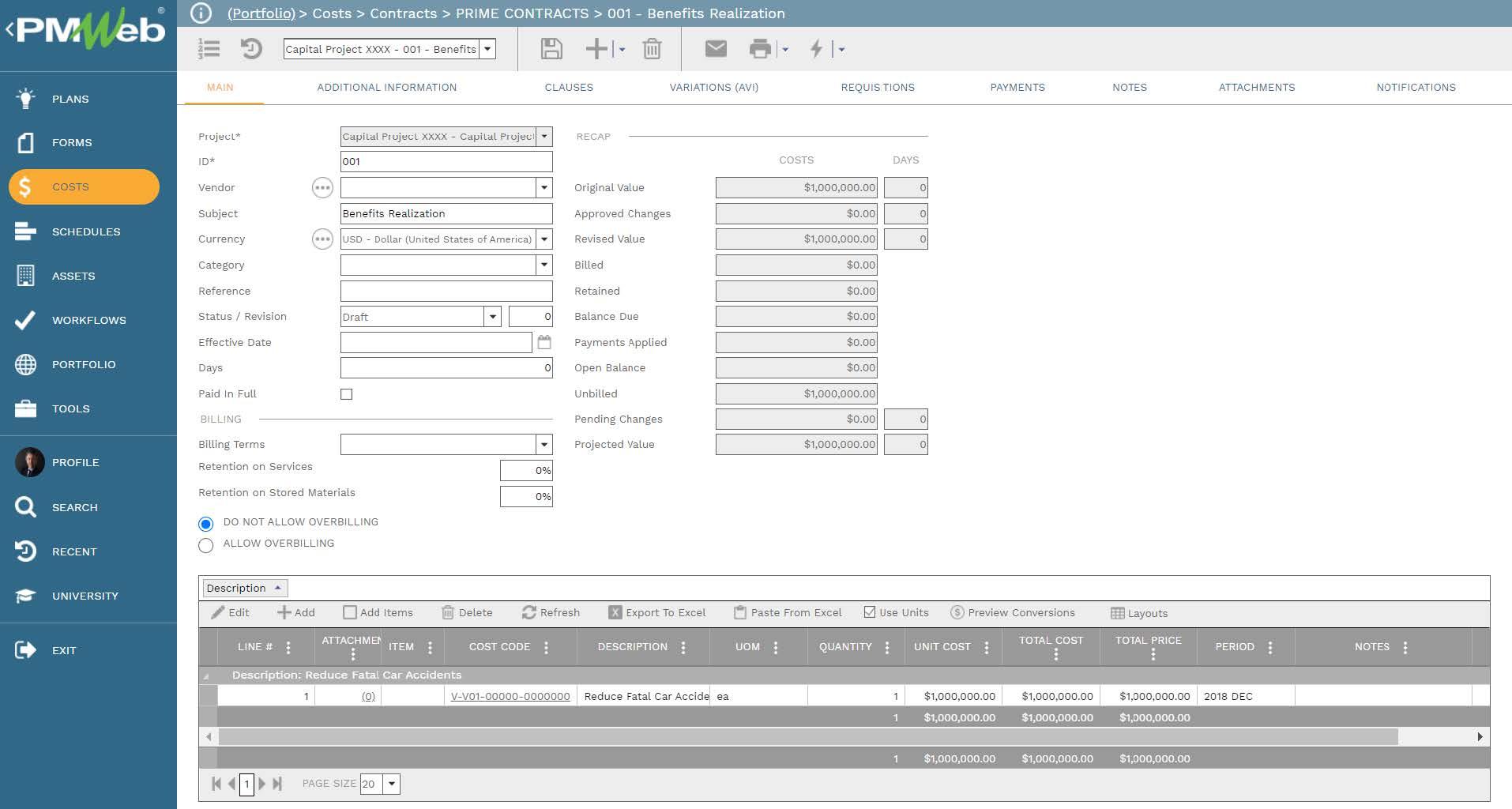
To organize and manage all types of benefits anticipated across the complete projects’ portfolio for an organization, PMWeb cost breakdown structure (CBS) is used to achieve this. PMWeb allows having 16 levels for the CBS which help in mapping benefits into the strategic performance reporting levels used by the organization whether this was aligned with the balanced score categories or not. Each benefit captured in PMWeb revenue is assigned its relevant CBS level.
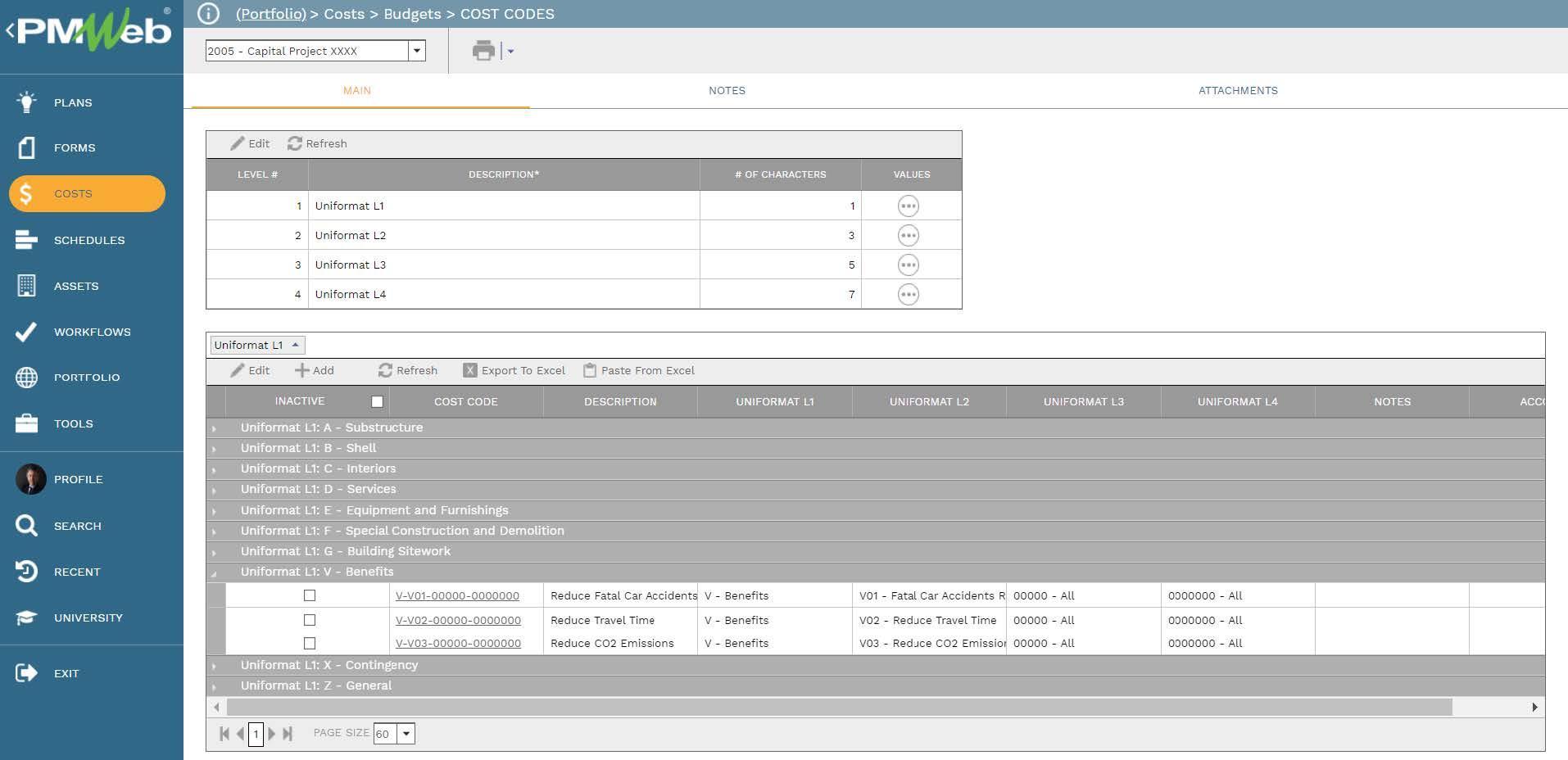
To manage all changes that might affect the benefits expected from each project, use the change order module. Those changes are used when there is a requirement to increase or decrease the values of anticipated benefits or to expedite or delay the planned realization dates of those benefits. Similar to the Benefits contract, each change for any benefit should detail the period that the change impacts. The approved changes are the basis to maintain the revised Budget at Completion (BAC) and Planned Value (PV) projection
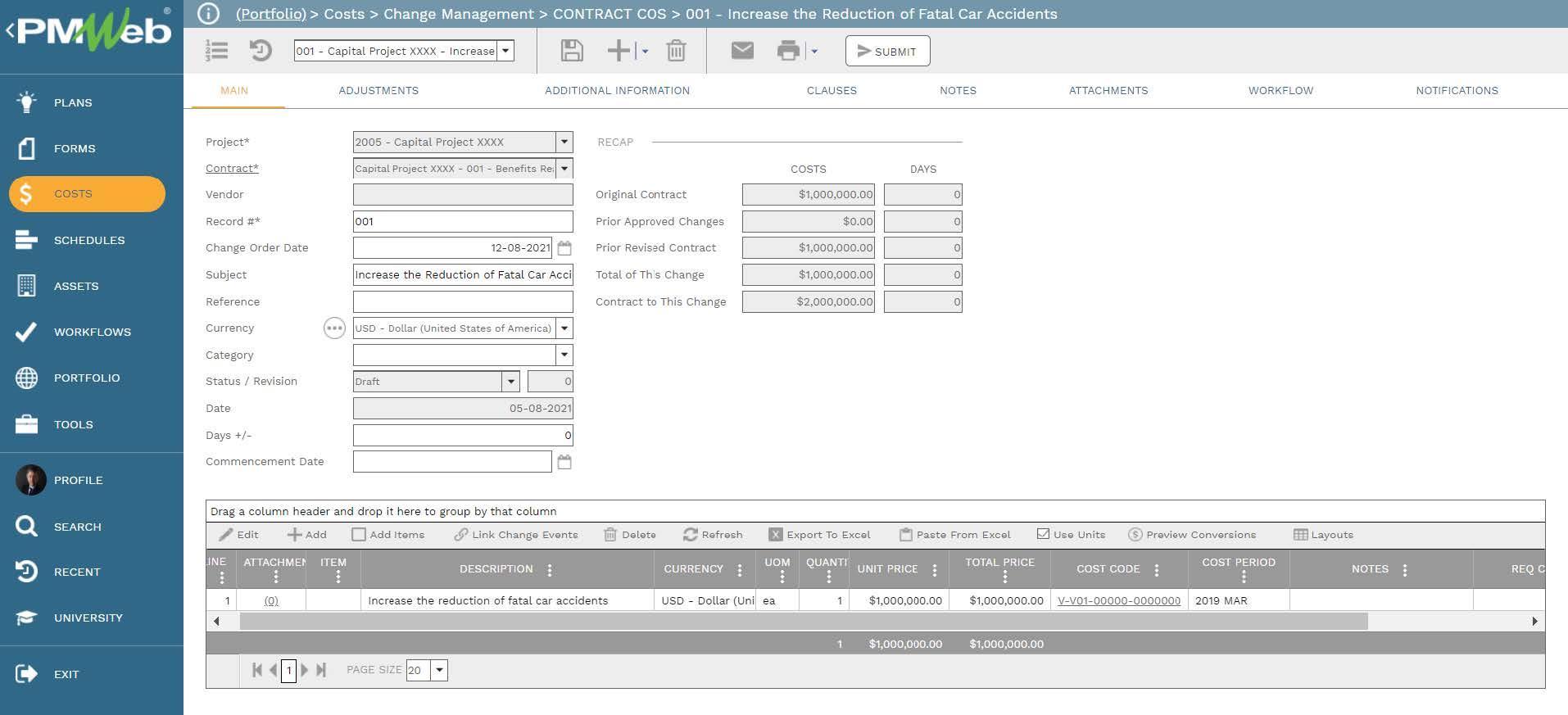
As the projects move into the operation stage and the anticipated benefits start to be realized, the requisition module associated with the revenue contract captures the actual benefits that were realized at the current reporting period. This value is the Earned Value (EV) needed for the EVM performance reporting. The payment requisition template includes a field to capture the Earned Schedule (ES) value which is the point in time when the current earned value (EV) was to be accomplished or earned. It is the point at which the Planned Value (PV) is supposed to be equal to the current EV. The estimated ES is calculated by using the formula that equals to ES = (((EV – PV of the last period)/(PV of the current period – PV of the last period)) X (Current performance period duration which is Actual Time (AT) – last performance period duration)) + last performance period duration.

Most of the time, transactions associated with the business processes detailed above are required to be attached with documents that support what was transmitted. The attachment tab for each business process is used to attach all those supportive documents. It is also highly recommended to add comments to each attached document to provide a better understanding of what the document was for. The attachment tab also allows the user to link other records for business processes implemented in PMWeb as well as associate URL hyperlinks with websites or documents that are not stored in the PMWeb document management repository.
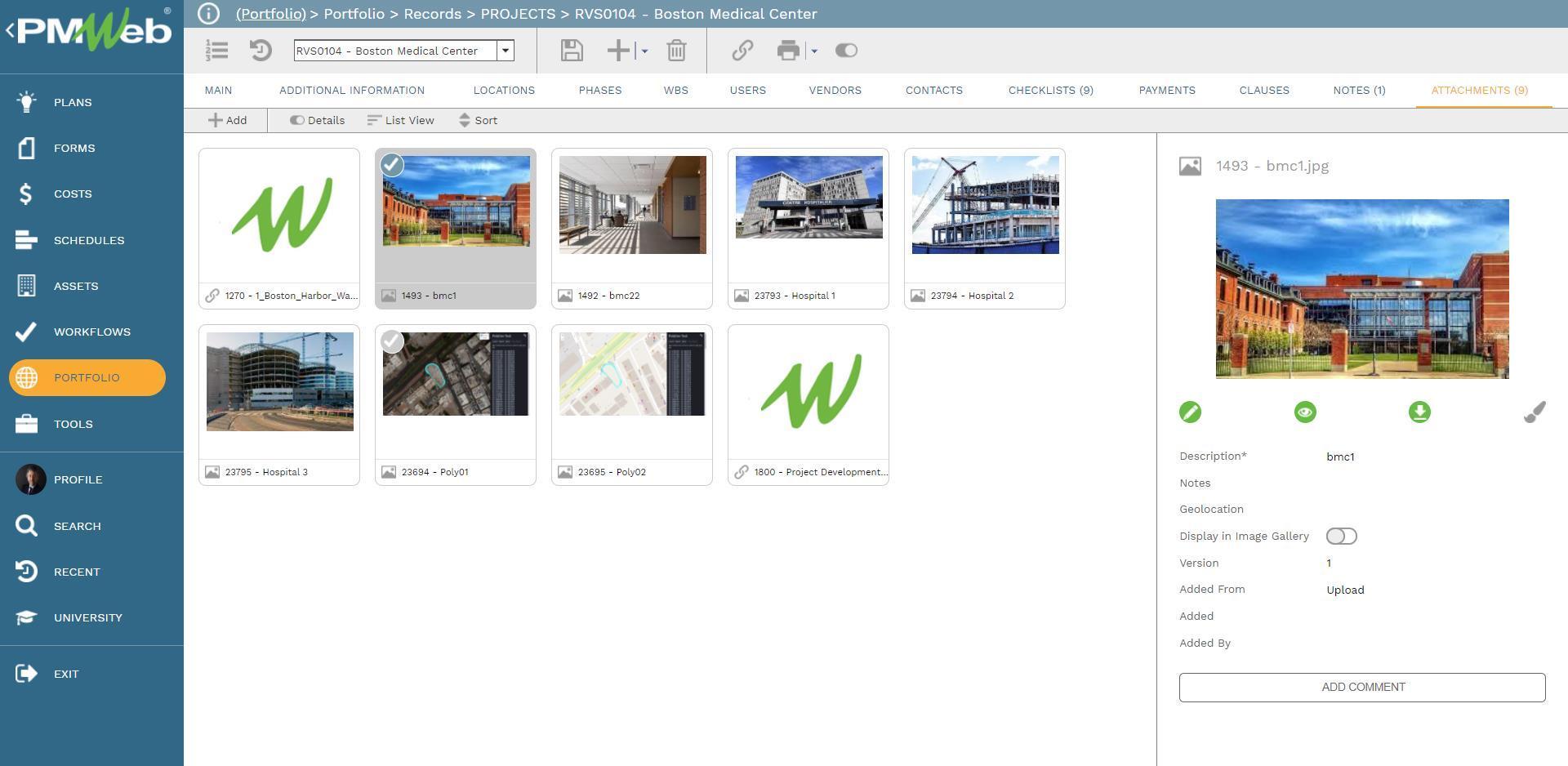
To enforce accountability for the transactions of each business process detailed above, use the PMWeb workflow module to create a workflow to formalize the review and approval tasks of those business processes. The workflow maps the sequence of the review and approval tasks along with the role or user assigned to the task, duration allotted for the tasks, rules for returning or resubmitting a document, and availability for each task. In addition, the workflow could be designed to include conditions to enforce the authority approval levels as defined in the Delegation of Authority (DoA) matrix. It should be noted that those involved in the workflows could include other members of the organization that are not necessarily part of the project management team.
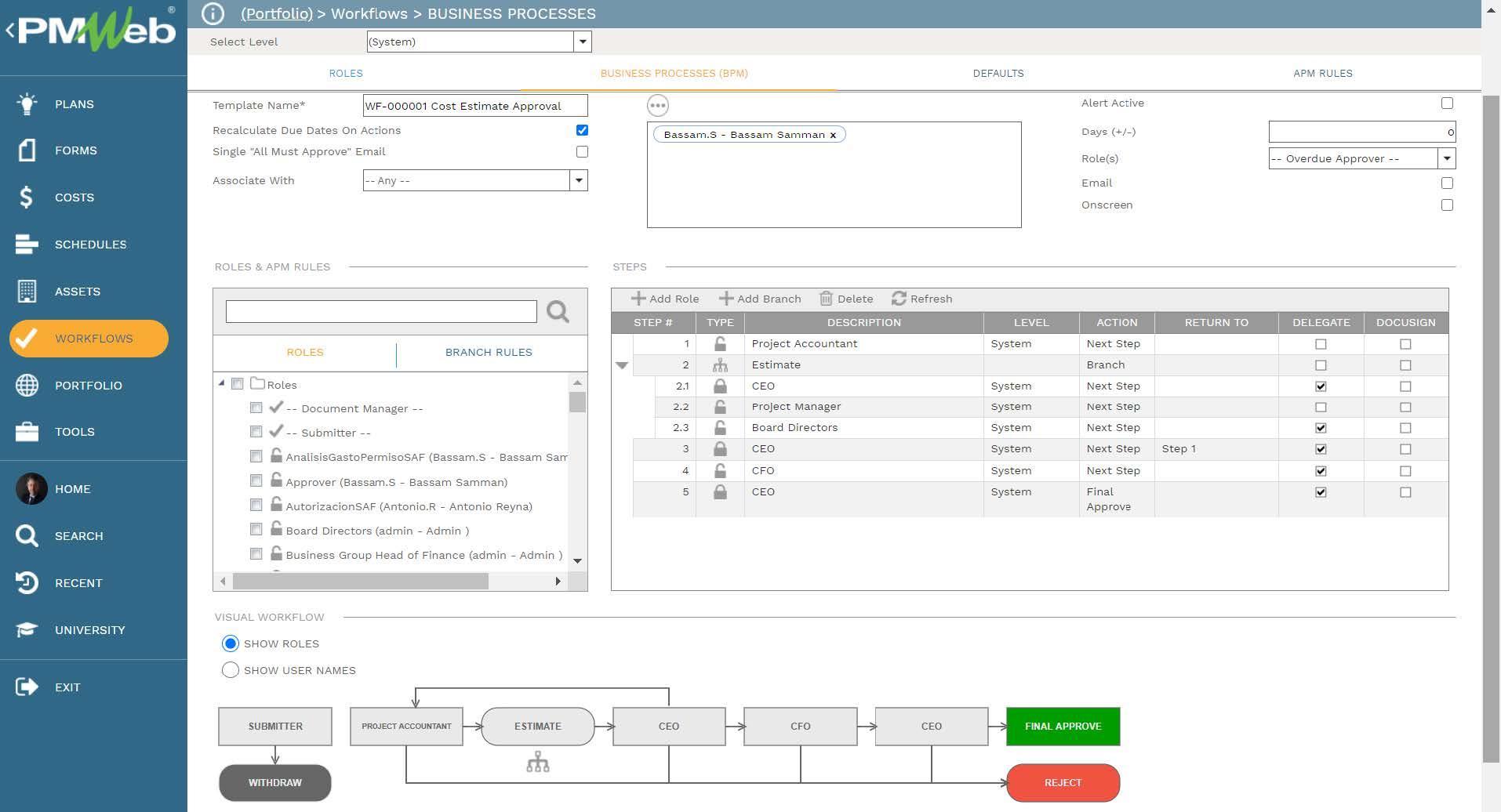
When a transaction is initiated for any of those business processes, the workflow tab available on each template captures the planned review and approve workflow tasks for each transaction as well as the actual history of those review and approval tasks. PMWeb captures the actual action data and time, done by who, action taken, comments made, and whether team input was requested.
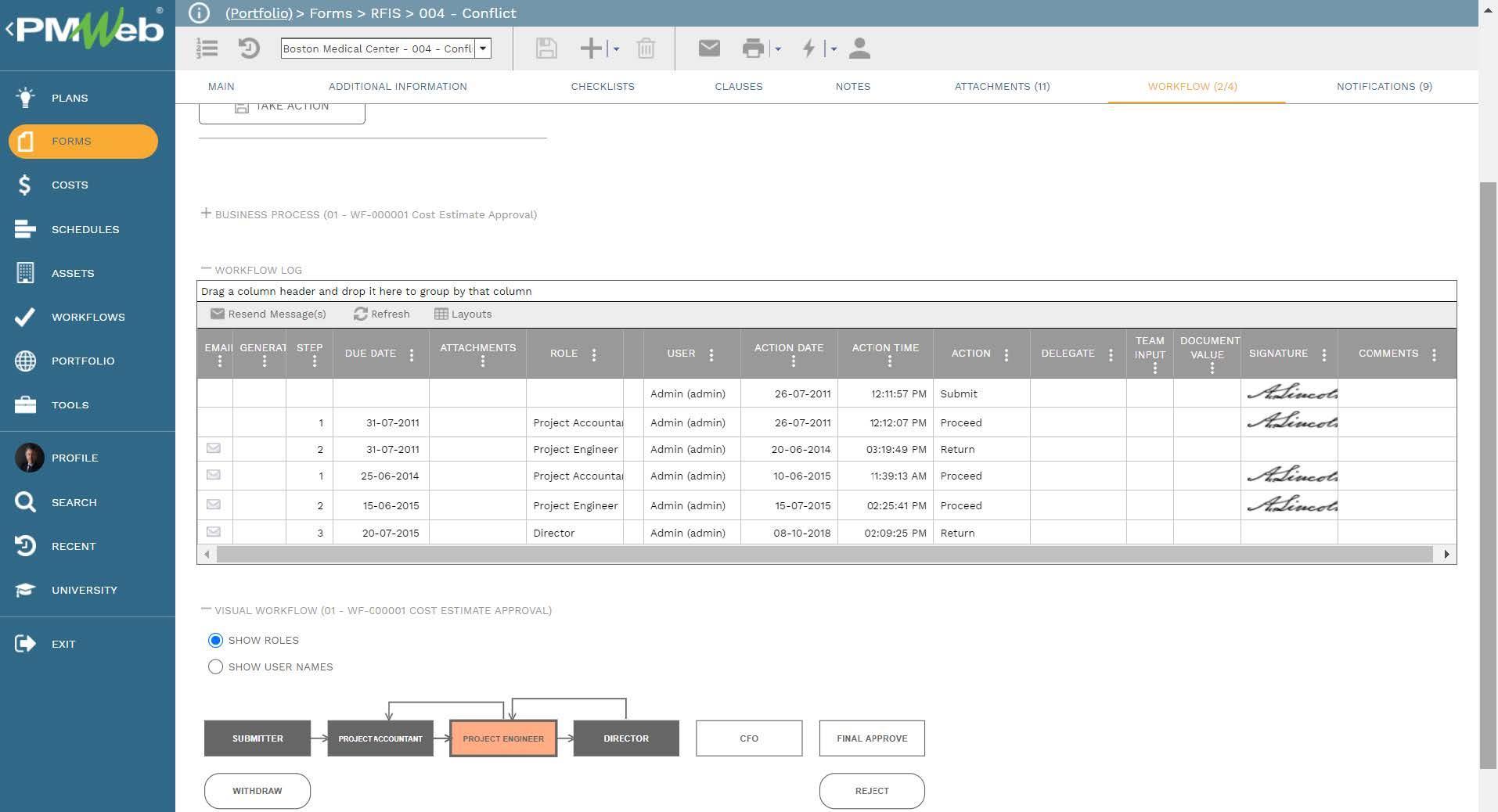
The data captured for the benefits realization business processes becomes the basis for creating a real-time single version of the truth Benefits Realization EVM report. The report includes performance gauges for the Schedule Performance Index (SPI) and Time Performance Index (TPI) for each benefit as well as the summary of all benefits. The report also includes a table that details the EVM measures for each benefit for the current performance evaluation period. For each benefit, the table includes the values for Budget at Completion (BAC), Planned Value (PV), Earned Value (EV), Earned Schedule (ES), Schedule Variance (SV), Schedule Performance Index (SPI), Time Variance (TV) and Time Performance Index (TPI).
